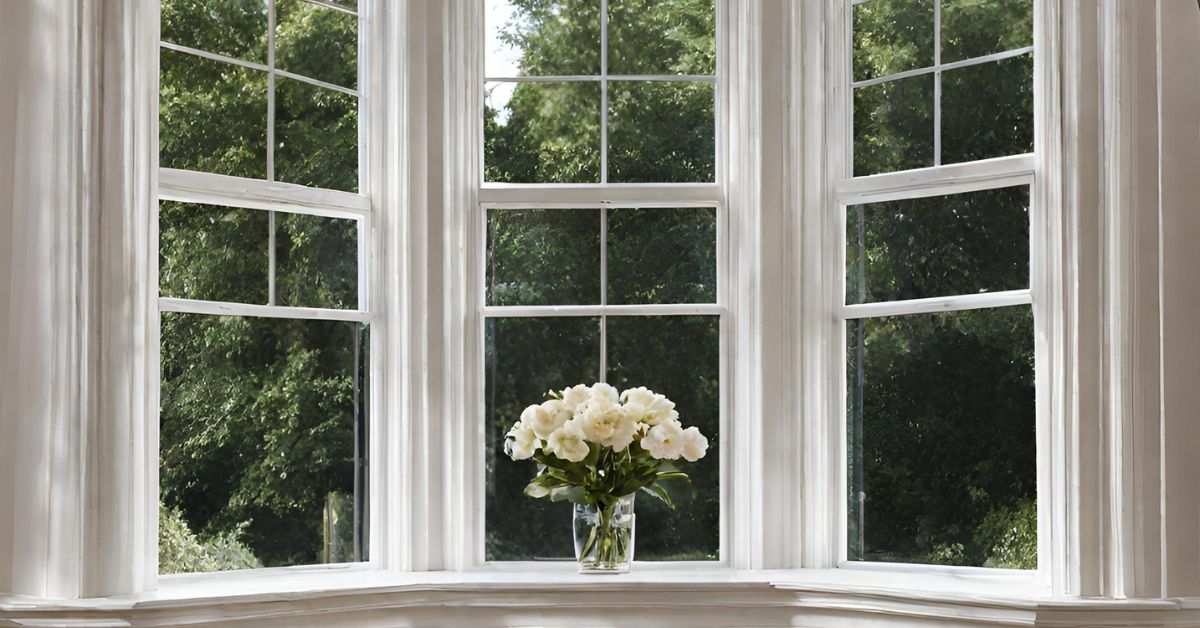Decorating bay windows with the perfect set of blinds enhances aesthetics and ensures privacy, light control, child safety, and energy efficiency. With abundant design options to evaluate, selecting window treatments for a bay window’s unique triangular or polygonal shape requires weighing functional and visual factors. This comprehensive guide explores ideas and considerations for choosing blinds and shades that seamlessly complement bay windows for optimal style, practicality, comfort, and safety.
Defining the Bay Window Structure
Bay windows are windows made up of three or more panels set at angles extending outward from a room to form an alcove space within. The segments combine to create a versatile focal shape that increases natural lighting, adds floor area, enables attractive décor displays, and expands room views. But bay windows pose challenges in window treatment design, demanding customized blinds or shades specifically scaled to the angled configuration for uniformity and completeness.
Privacy Solutions – Effective Light and View Control
Since bay windows protrude outward from the house, choosing blinds that can control the amount of light, glare, heat from sunlight, and people’s ability to see inside is essential. Fortunately, window covering manufacturers offer light-blocking and insulating solutions to accommodate the needs and privacy concerns presented by atypical bay window constructions.
Prioritizing Child Safety
The potential dangers posed to young children by cords and strangulation hazards magnify for bay windows low enough for a child to access. Parents must evaluate safety features like cordless operation or cord tension devices to secure hazardous loops when choosing window coverings. Custom blinds and shades specifically designed for bay windows allow for safety measures and eliminate risks.
Material and Design Recommendations
• Roller shades outfitted with thick, light-blocking fabric provide full blackout privacy and insulation benefits. Clean, straight stacking enhances contemporary or minimalist decors.
• Natural woven wood shades lined to darken interiors filter light serenely for rustic to modern styles, while faux woods allow wider stain options.
• Honeycomb shades insulate well and filter daylight evenly. Some offer blackout properties when closed for media rooms or nighttime sleeping.
• Shutters give a classic look to materials like sturdy vinyl, wood, and composites, matching interior finishes for uniformity.
• Layered curtains with complementary sheers soften bay windows while controlling light and views. Rods mounted behind fabrics hide hardware neatly.
• Patterned shades add lively contrast and interest to plain walls at bay window focal points without darkening the room.
Factor in Energy Efficiency
Look for window treatments specifically made for angled bay windows when cold insulation or heat protection remains a priority in your climate. Properties like built-in side channels, staggered seams between panels, thicker insulated fabrics, and air pocket cellular shades are qualified products to save on energy costs.
Interior Design and Decor Considerations
Carefully examine your bay window within the context of the room’s size, layout, furnishings, and style. This evaluation will guide you in selecting colors, patterns, textures, and opacities for shades and blinds that beautifully complement your space. Design experts first consider the existing décor elements already influencing the room’s aesthetic when advising clients on bay windows blending harmoniously. Customizing window treatments to echo current color schemes, wood tones, and textures pulls the alcove into the overall decor seamlessly.
Scale and Proportion Matters
For cohesion with room dimensions, properly proportioned window treatments should match the angle, width and length of every distinct window panel comprising the bay shape. Bay windows without unified, well-scaled coverings often look glaringly asymmetrical and disjointed. Integrated frames with embedded shades or blinds solve fitting challenges.
Complete the Look with Decor extras
Infuse decorative warmth into bay alcoves with frame detailing, swags, and cascading side treatments. Cushions lining seats dressed in matching fabric create cozy built-in seating nooks that enhance the enjoyment of the charming views outside the windows. Greenery, art, mirrors, and wallcovering inside alcoves personalize these captivating architectural focal points further.
Frequently Asked Questions
Smooth-fronted blinds like vinyl, aluminum, or composite make blind cleaning more easy than soft fabrics. Also, opt for machine-washable fabric if you want drapes.
Choosing shades that span the entire width of your bay without awkward seams or gaps makes a huge difference visually. Cordless shades also create a streamlined look without dangling pull cords cutting up your window space.
Hardware options like mitered joining brackets on the mounting rails, adjustable wand tilts, and bendable tracks for curves allow for precise alignment with uniquely angled bays. Investing in custom-made blinds designed for your exact window specifications may be needed for especially challenging shapes.
Ready for a consultation?
For a free, customized bay window treatment design meeting, our designers will bring samples right to your home. Schedule a consultation with The Window Design Studio, serving California homeowners and interior decorators. Together, we’ll tailor the ideal window covering solutions for the specialized requirements of your beautiful bay windows.






